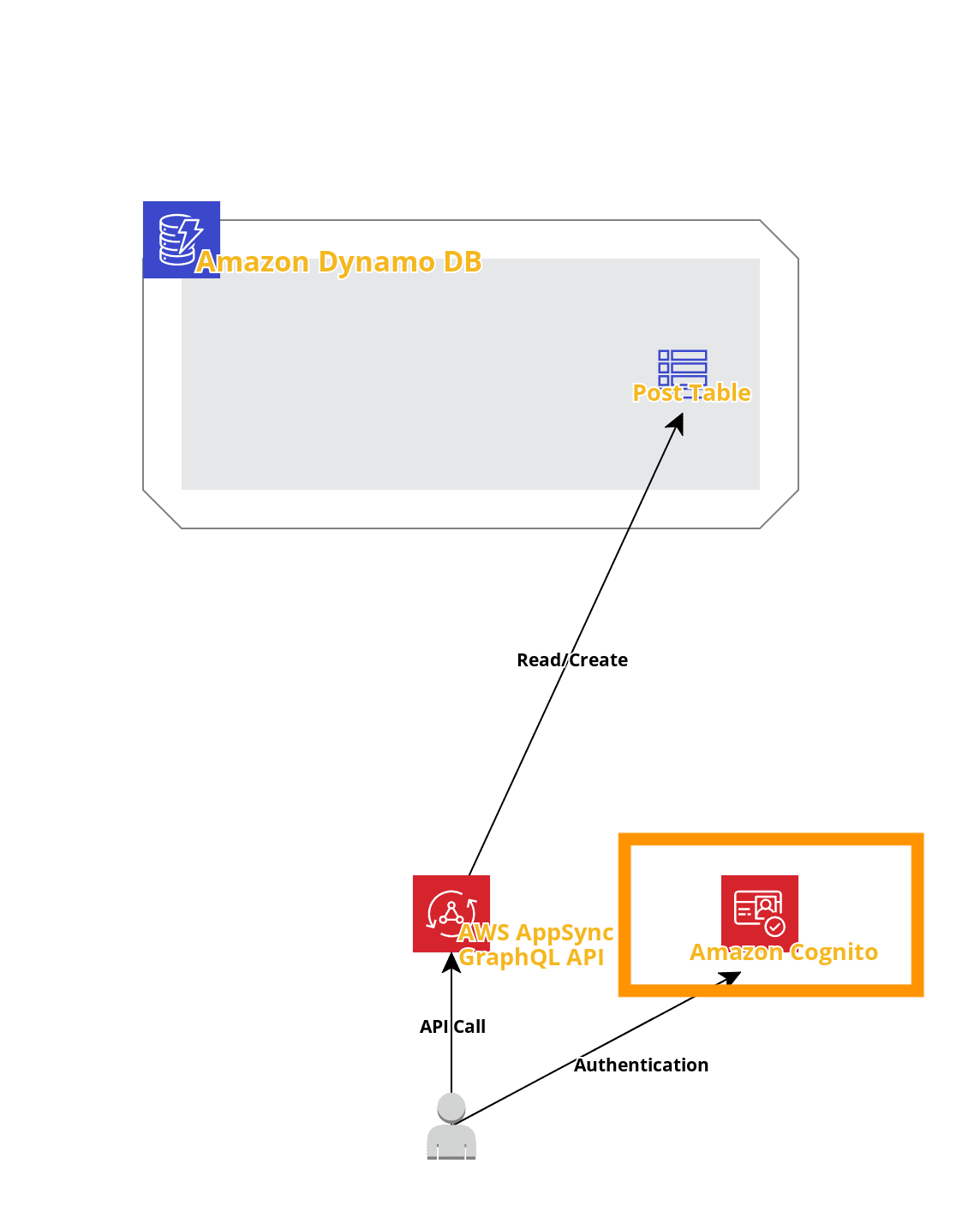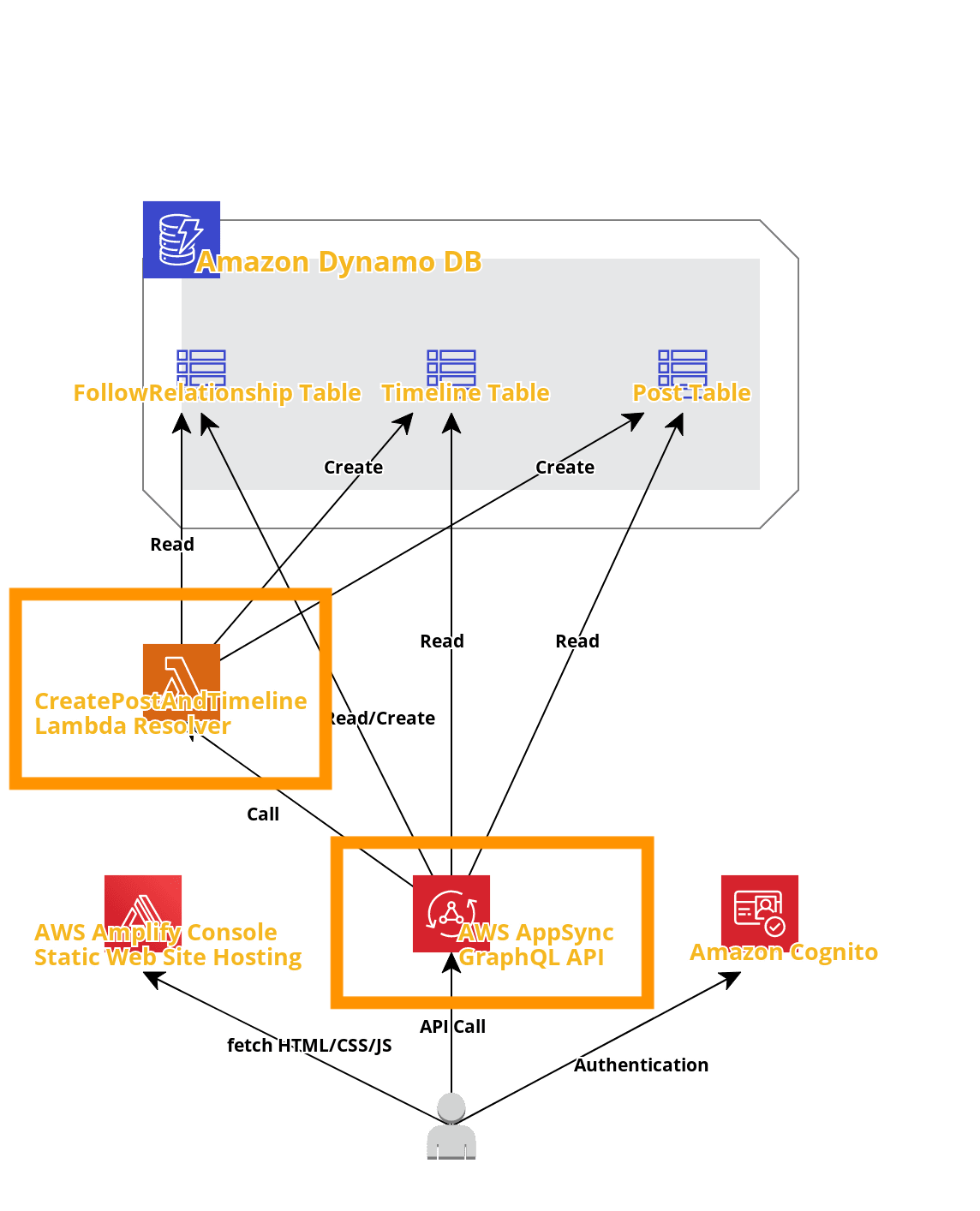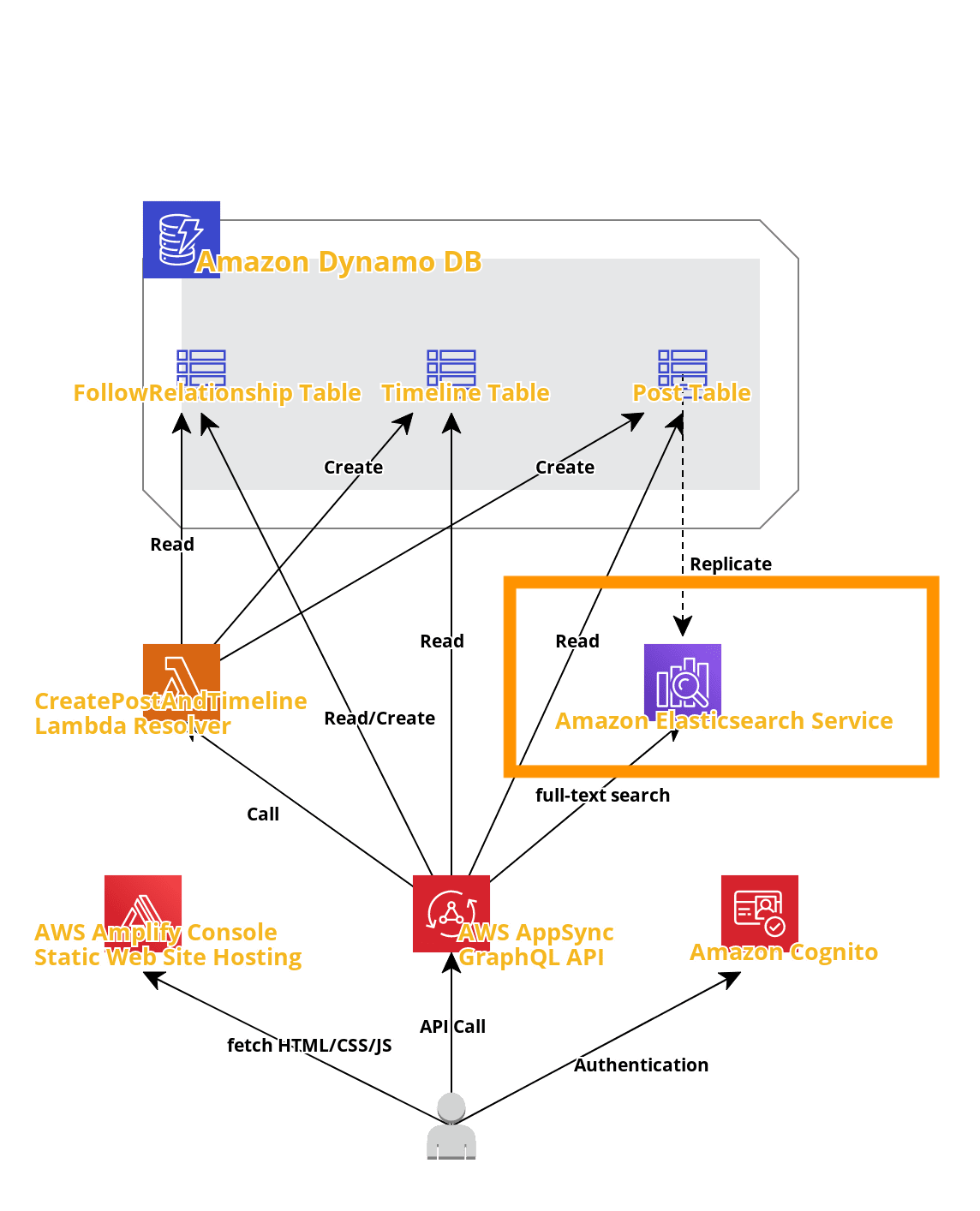This post is a quick walkthrough of some quintessential services offered by AWS Amazon to build a scalable and complex application, rather than a tutorial.
Introduction
After having a fair grasp on the frontend technologies I wanted to explore the backend development domain especially cloud based services. So, I decided to build a simple social network app using AWS services.
What are we going to build?
As mentioned in the title, we will be building a social network app with following features.
- Authentication - The users will be able to create an account, login, manipulate their passwords.
- Post and Display tweets - The users can post and also see tweets of other users on the app.
- Follow and Timeline features - The users can follow and see the posts of followees on a dedicated timeline page.
- Search posts - The users can search for posts with specific keywords.
Services we are going to have a look at and study the use cases of :
- AWS Amplify CLI
- Amazon Cognito
- Amazon DynamoDB
- AWS AppSync
- AWS Lambda
- Amazon Elasticsearch Service
Bootstrapping the app
Before we start with integrating the features we need set up the necessary toolchains and modules required to initiate the development.
AWS Amplify
AWS Amplify is a set of purpose-built tools and features that lets frontend web and mobile developers quickly and easily build full-stack applications on AWS, with the flexibility to leverage the breadth of AWS services as your use cases evolve. With Amplify, you can configure a web or mobile app backend, connect your app in minutes, visually build a web frontend UI, and easily manage app content outside the AWS console. Ship faster and scale effortlessly—with no cloud expertise needed.
The CLI toolchain
The Amplify Command Line Interface (CLI) is a toolchain to configure and maintain your app backend from your local desktop. Configure cloud functionality using the CLI's interactive workflow and intuitive use cases such as auth, storage, API.
We will use Amplify CLI to quickly provision backend resources on AWS.
1. Authentication

Amazon Cognito
Amazon Cognito provides authentication, authorization, and user management for your web and mobile apps. Your users can sign in directly with a user name and password, or through a third party such as Facebook, Amazon, Google or Apple.
The two main components of Amazon Cognito are user pools and identity pools. User pools are user directories that provide sign-up and sign-in options for your app users. Identity pools enable you to grant your users access to other AWS services. You can use identity pools and user pools separately or together.

The Amplify Framework uses Amazon Cognito as the main authentication provider.
2. Post and Display Tweets

To manage posts we need a database service and an API service to talk to this database service.
Amazon DynamoDB
Considering the fact the we are building a social network app which can get complex and need to be scaled at any point of time, we need a database with flexible schema.
Amazon DynamoDB being a NoSQL database that supports key-value and document data models satisfies our requirement for this particular use case. This enables DynamoDB to have a flexible schema, so each row can have any number of columns at any point in time. This allows you to easily adapt the tables as your business requirements change, without having to redefine the table schema as you would in relational databases.
GraphQL API
GraphQL is a language for APIs that enables you to query and manipulate data easily through an intuitive and flexible syntax. GraphQL provides a syntax to describe data requirements and interactions, allowing you to ask for exactly what you need and get back predictable results. It also makes it possible for you to access many sources in a single request, reducing the number of network calls and bandwidth requirements, therefore saving battery life and CPU cycles consumed by your applications.
AWS AppSync
AWS AppSync is a fully managed service that makes it easy to develop GraphQL APIs by handling the heavy lifting of securely connecting to data sources like AWS DynamoDB, Lambda, and more.
Follow/Timeline feature

Current scenario As we can see we have added 2 more tables to implement the desired features.
- Timeline Table - To store the posts corresponding to a specific users based on his followees
- FollowRelationship Table - To store the follow-followee pairs in the table.
This is a typical use case scenario for every social network app where there is a dedicated timeline/feed page which shows the posts to a user of his followees. We need a logic that run in the background and checks or picks only those posts and displays them to the user whom he/she follows.
AWS Lambda
AWS Lambda is a server less, event-driven compute service that lets you run code for virtually any type of application or backend service without provisioning or managing servers. AWS Lambda is the best service that helps us in this scenario since we want the operation to be triggered only when needed instead of deploying the logic on a separate server which would lead to increased cost and computation.
Search posts

Users may want to reach users of interest or search for post with interested words. We need to make our data in the table searchable.
Amazon Elastic Search service
Amazon Elasticsearch Service is a managed service that makes it easy to deploy, operate, and scale Elasticsearch in the AWS Cloud. Elasticsearch is a popular open-source search and analytics engine for use cases such as log analytics, real-time application monitoring, and click stream analytics.
The Amplify CLI provides GraphQL directives to enhance your schema with additional capabilities.
searchable directive - DynamoDB Streams hooks the inserted data into the DynamoDB Table and adds the record to Elasticsearch. To throw a query from the front end to Elasticsearch, execute a Query called searchPosts that is set up in the GraphQL API automatically.
This completes our application development🚀
Conclusion
We saw that how the AWS services help us make the development process of a complex and scalable application easy with different dedicated service providers. I really learned a lot while developing this application.
This was a part of an AWS amplify workshop . You can try your hands on the AWS services as well by making projects thus understanding the use cases of each service better.
